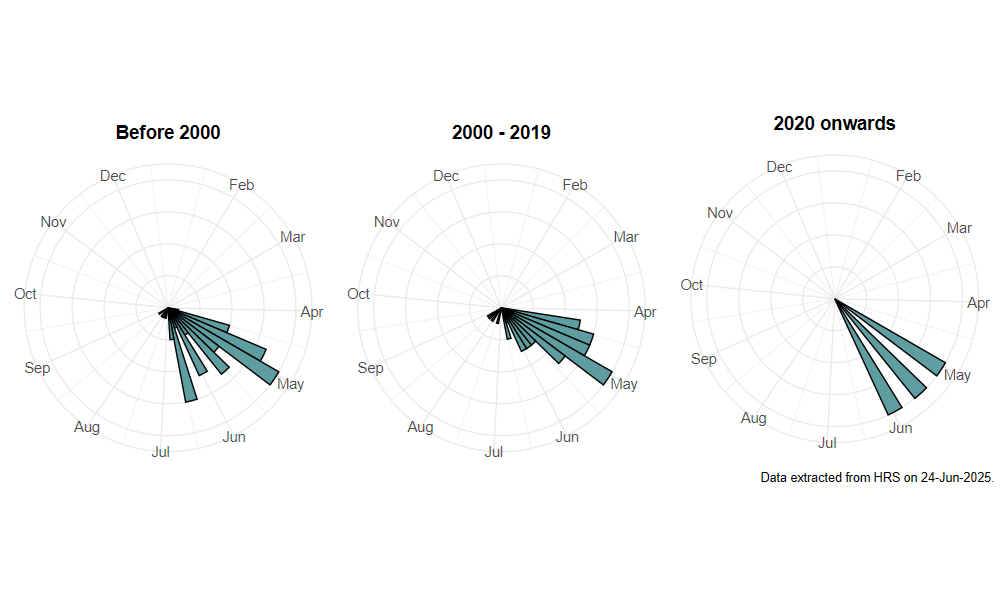Neocnemodon pubescens (Delucchi & Pschorn-Walcher, 1955)
Identification
Identification difficulty = 3. ![]()
![]() according to Ball & Morris, 20241
according to Ball & Morris, 20241
Synonymy
Neocnemodon pubescens Delucchi & Pschorn-Walcher in Stubbs & Falk(1983). It was separated from H. vitripennis in 1955 and earlier records of these two species are likely to be confused.
Biology
A significant proportion of records are from conifer woodlands. The larvae of Heringia appear to be predaceous upon aphids and H. pubescens seems most likely to be associated with conifer aphids. It has been known to occur in considerable numbers in some coniferous woodlands. Adults have been noted to visit a range of woodland edge flowers, including Dogs Mercury Mercuralis perennis and Snowberry Symphoricarpos albus but are more commonly found flying low down amongst vegetation or sun-basking on leaves.
Flight period
The following plots show the number of unique records per week excluding those reported to be of immature stages.

Status
Lower risk (Nationally scarce) - Ball & Morris, 20142. Notable - Falk, 19913.
Distribution
A widely distributed species that occurs in southern England as far north as Yorkshire and then appears again in the Highlands of Scotland. This seeming disjunct distribution may be indicative of two separate populations or possibly recorder effort.

Trends
The following plots show the Frescalo TFactor vs year and a map of the rescaled frequency (all records) for the species.
-
Ball, S., & Morris, R. (2024). Hoverflies of Britain and Ireland. WILDGuides (3rd ed.). Oxford: Princeton University Press. ↩
-
Ball, S., & Morris, R. (2014). A review of the scarce and threatened flies of Great Britain. Part 6: Syrphidae. ( No. 9). Species status (pp. 1–130). Peterborough: JNCC. ↩
-
Falk, S. (1991). A review of the scarce and threatened flies of Great Britain. ( No. 39). Research and Survey in Nature Conservation (pp. 1–194). Peterborough: NCC. ↩